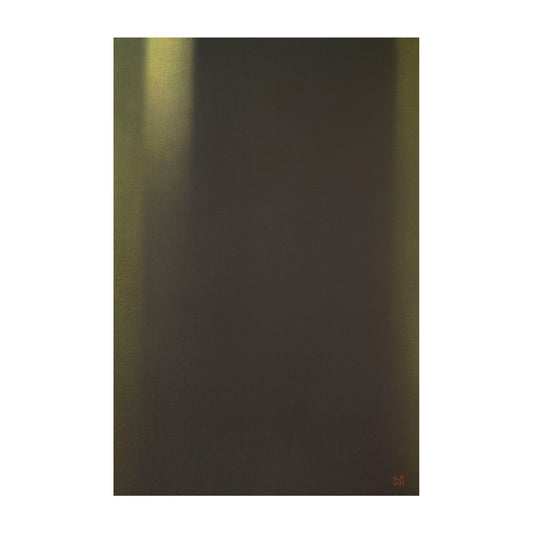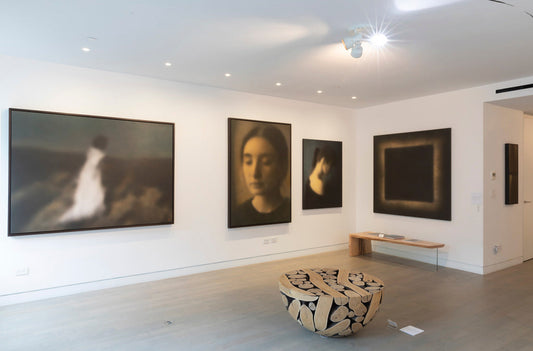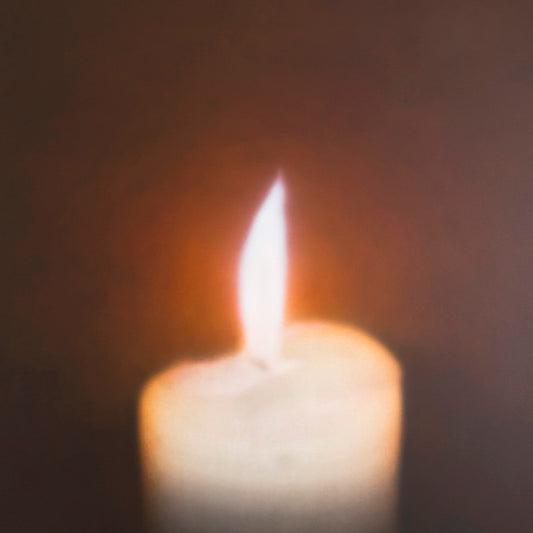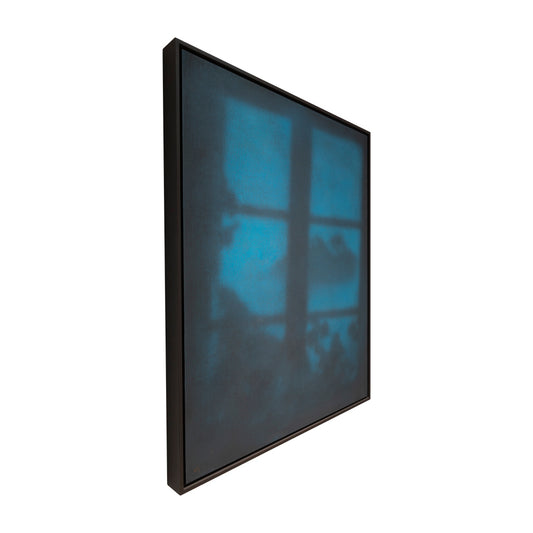NIKOLAI MAKAROV

ARTIST BIO & STATEMENT
Nikolai Makarov began his career as a self-taught artist in Russia, working independently until 1975, when he relocated to East Berlin. There, he pursued studies in history at Humboldt University, followed by advanced training at East Germany’s Academy of Arts. At the Academy, he was mentored in the master classes of Werner Klemke (Berlin) and Rudolf Hausner (Vienna). In 1988, Makarov was inducted as a member of Artists House, part of the Austrian Society of Fine Arts.
Now based in Berlin, Makarov dedicates himself fully to his artistic practice. Initially favoring oil paints, he later shifted to working with acrylics—encouraged by Rudolf Hausner. By diluting acrylics with water, Makarov developed his signature technique of layering translucent washes to create seamless, moving surfaces that became the hallmark of his style.
Makarov first gained recognition during his student years, and his growing reputation led to exhibitions in major museums and galleries, establishing his work on the international stage. Since 2000, he has served as the director of the art association StilLeben e.V. in Berlin and as President of the Sergej Mawrizki Foundation.
His artworks are held in numerous public and private collections, including the Arnot Art Museum; the Russian Consulate; the Sloane Kettering Memorial Hospital in New York; the St. Regis Hotel and Museum in San Francisco; the Kolodzei Foundation in Russia; the Busch-Reisinger Museum at Harvard University; and the Museum of Fine Arts in Leipzig, among many others. Makarov has been invited to participate in over fifty solo exhibitions worldwide, notably "Be Still" at Waterfall Gallery (New York), "History of National Football" at Triumph Gallery (Moscow), exhibitions at Kunsthalle Am Arlberg (Austria), CWC Gallery (Berlin), and 24beaubourg & Mario in Bermel.
In addition to his artistic work, Makarov founded the Museum of Silence in Berlin, situated just beyond the city's vibrant center. He envisions the museum as a space to restore one of art’s oldest purposes: inviting viewers into deep contemplation and fostering a connection to their spiritual selves. Here, his paintings are displayed in thoughtfully designed interiors created by renowned architects, transforming the experience of viewing into a realm where time seems to stand still.
Nikolai Makarov began his career as a self-taught artist in Russia, working independently until 1975, when he relocated to East Berlin. There, he pursued studies in history at Humboldt University, followed by advanced training at East Germany’s Academy of Arts. At the Academy, he was mentored in the master classes of Werner Klemke (Berlin) and Rudolf Hausner (Vienna). In 1988, Makarov was inducted as a member of Artists House, part of the Austrian Society of Fine Arts.
Now based in Berlin, Makarov dedicates himself fully to his artistic practice. Initially favoring oil paints, he later shifted to working with acrylics—encouraged by Rudolf Hausner. By diluting acrylics with water, Makarov developed his signature technique of layering translucent washes to create seamless, moving surfaces that became the hallmark of his style.
Makarov first gained recognition during his student years, and his growing reputation led to exhibitions in major museums and galleries, establishing his work on the international stage. Since 2000, he has served as the director of the art association StilLeben e.V. in Berlin and as President of the Sergej Mawrizki Foundation.
His artworks are held in numerous public and private collections, including the Arnot Art Museum; the Russian Consulate; the Sloane Kettering Memorial Hospital in New York; the St. Regis Hotel and Museum in San Francisco; the Kolodzei Foundation in Russia; the Busch-Reisinger Museum at Harvard University; and the Museum of Fine Arts in Leipzig, among many others. Makarov has been invited to participate in over fifty solo exhibitions worldwide, notably "Be Still" at Waterfall Gallery (New York), "History of National Football" at Triumph Gallery (Moscow), exhibitions at Kunsthalle Am Arlberg (Austria), CWC Gallery (Berlin), and 24beaubourg & Mario in Bermel.
In addition to his artistic work, Makarov founded the Museum of Silence in Berlin, situated just beyond the city's vibrant center. He envisions the museum as a space to restore one of art’s oldest purposes: inviting viewers into deep contemplation and fostering a connection to their spiritual selves. Here, his paintings are displayed in thoughtfully designed interiors created by renowned architects, transforming the experience of viewing into a realm where time seems to stand still.
Now based in Berlin, Makarov dedicates himself fully to his artistic practice. Initially favoring oil paints, he later shifted to working with acrylics—encouraged by Rudolf Hausner. By diluting acrylics with water, Makarov developed his signature technique of layering translucent washes to create seamless, moving surfaces that became the hallmark of his style.
Makarov first gained recognition during his student years, and his growing reputation led to exhibitions in major museums and galleries, establishing his work on the international stage. Since 2000, he has served as the director of the art association StilLeben e.V. in Berlin and as President of the Sergej Mawrizki Foundation.
His artworks are held in numerous public and private collections, including the Arnot Art Museum; the Russian Consulate; the Sloane Kettering Memorial Hospital in New York; the St. Regis Hotel and Museum in San Francisco; the Kolodzei Foundation in Russia; the Busch-Reisinger Museum at Harvard University; and the Museum of Fine Arts in Leipzig, among many others. Makarov has been invited to participate in over fifty solo exhibitions worldwide, notably "Be Still" at Waterfall Gallery (New York), "History of National Football" at Triumph Gallery (Moscow), exhibitions at Kunsthalle Am Arlberg (Austria), CWC Gallery (Berlin), and 24beaubourg & Mario in Bermel.
In addition to his artistic work, Makarov founded the Museum of Silence in Berlin, situated just beyond the city's vibrant center. He envisions the museum as a space to restore one of art’s oldest purposes: inviting viewers into deep contemplation and fostering a connection to their spiritual selves. Here, his paintings are displayed in thoughtfully designed interiors created by renowned architects, transforming the experience of viewing into a realm where time seems to stand still.
Healing Campaign, 2020
- Choosing a selection results in a full page refresh.
- Opens in a new window.






















